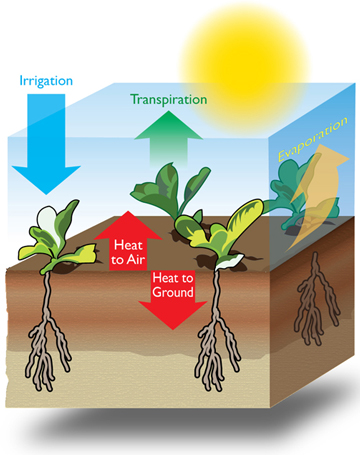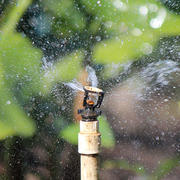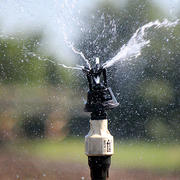
Irrigation can be used in hot weather to cool crops and soil. This may lead to better yields.
Crops absorb water from the soil through their roots. The water is transported through the plant tissues and eventually released through the leaves to the atmosphere as vapor. This is known as transpiration.
Evaporation is water that changes from a liquid to a vapor. These processes together are known as evapotranspiration. This water loss increases in hot, dry areas.
Small amounts of water applied throughout several short cycle irrigation events can lower crop temperature and raise the humidity of the air as the water evaporates. This reduces the water loss by transpiration.
The water required for irrigation-cooling is less than the amount needed for soil irrigation. Irrigation-cooling does not replace an irrigation event. Adequate soil moisture must be maintained to achieve full benefits of cooling.
Irrigation-cooling is more effective if the application is uniform. Senninger Xcel-Wobblers and mini-Wobblers are ideal for this because they have up to 95% distribution uniformity.
Crop and climate conditions impact the need for crop cooling. The plant response to irrigation-cooling may vary at different stages of plant growth.
Sources
“Using Irrigation for Tree Fruit Cooling” Ministry of Agriculture and Food, Resource Management Branch, British Columbia
“The Water Cycle: Evaporation” USGS



